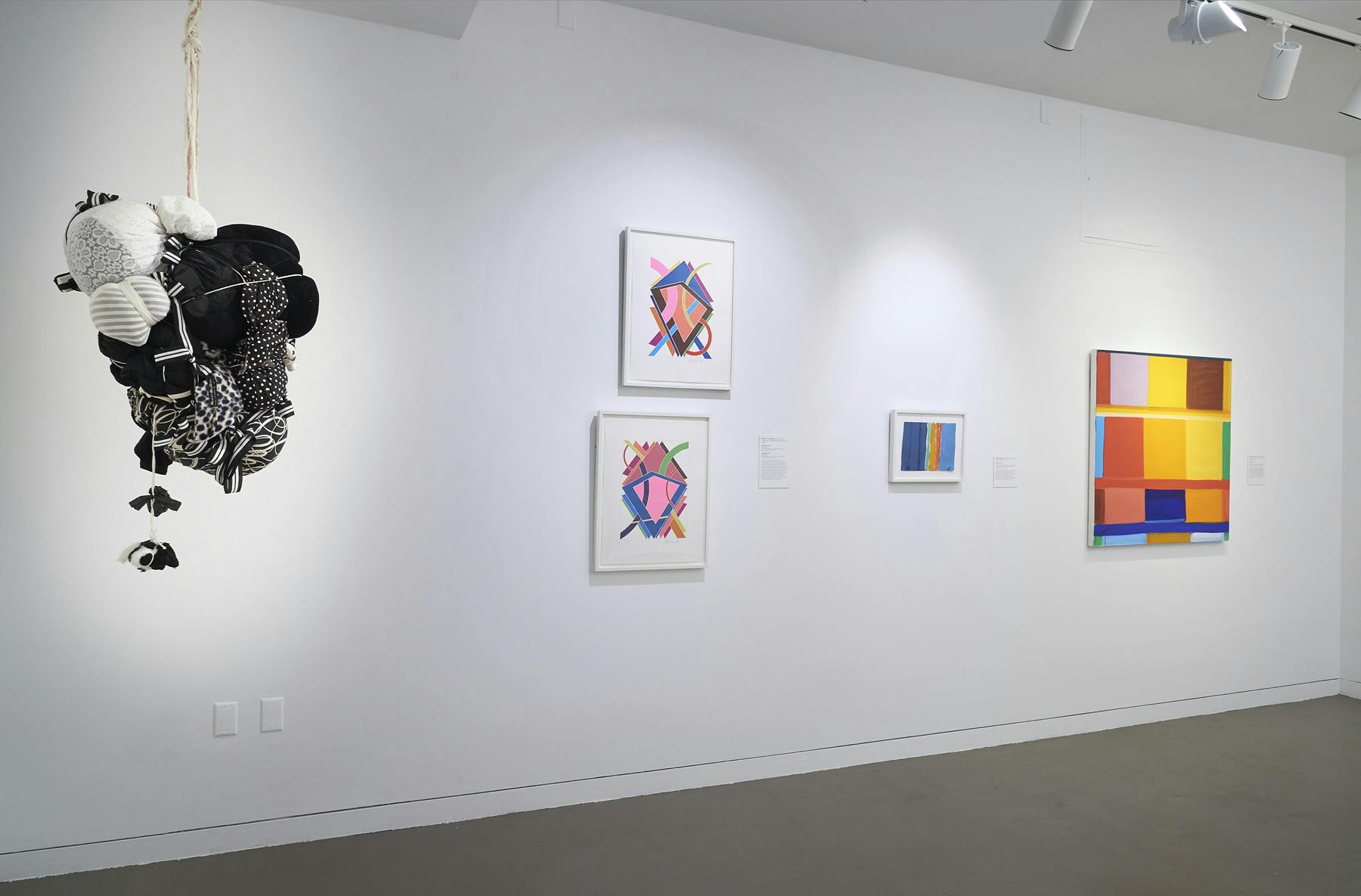Frank Bowling
(b. 1934)Frank Bowling’s decades-long engagement with painting has resulted in expansive formalist explorations of his materials involving techniques like pours, washes, investigations of color and light, and stenciling.
Biography
He pairs his abstract works with enigmatic titles that reflect the life around him (the family home, friends, historical references, and landscapes), but which never upstage his material investigations recorded on canvas.
Born in Guyana, Bowling moved to London in 1953; he graduated from the Royal College of Art in 1962. During the first half of the 1960s, Bowling found early success in London through works defined by expressive figuration that made clear autobiographical and sociopolitical references, among other subjects.
New York, where Bowling would move to in 1966, proved to be a defining location for the artist and ushered in a shift from clear representational elements. Bowling’s abstract turn was marked by what would eventually be known as the Map Paintings—stylized, stenciled continents on color-washed and stained canvases first exhibited at the Whitney Museum of American Art in 1971. The artist’s subsequent work explored nonrepresentational painting with varying applications of paint. Furthering his artistic developments, Bowling integrated himself with contemporaries like Mel Edwards, Daniel LaRue Johnson, Al Loving, and Jack Whitten. Working as a journalist and editor, Bowling contributed to Arts Magazine until 1972. The artist also shared his stance on the possibilities of his formalist approach during the period’s debate on what “Black art” should be in essays and interviews across various publications. Bowling carried on spending time between New York and London, until settling mainly in London in 2008.
Bowling’s experimentations with abstraction continued, from sculptural paintings in the 1980s that involved embedded objects on thickly textured canvases, to present-day uses of acrylic gels, collage, and stitched canvases. His practice asserts a commitment and curiosity for the material possibilities of paint.
Exhibitions and Events
Frank Bowling
(b. 1934)Frank Bowling’s decades-long engagement with painting has resulted in expansive formalist explorations of his materials involving techniques like pours, washes, investigations of color and light, and stenciling.
Blonde Betsey, 1976
Biography
He pairs his abstract works with enigmatic titles that reflect the life around him (the family home, friends, historical references, and landscapes), but which never upstage his material investigations recorded on canvas.
Born in Guyana, Bowling moved to London in 1953; he graduated from the Royal College of Art in 1962. During the first half of the 1960s, Bowling found early success in London through works defined by expressive figuration that made clear autobiographical and sociopolitical references, among other subjects.
New York, where Bowling would move to in 1966, proved to be a defining location for the artist and ushered in a shift from clear representational elements. Bowling’s abstract turn was marked by what would eventually be known as the Map Paintings—stylized, stenciled continents on color-washed and stained canvases first exhibited at the Whitney Museum of American Art in 1971. The artist’s subsequent work explored nonrepresentational painting with varying applications of paint. Furthering his artistic developments, Bowling integrated himself with contemporaries like Mel Edwards, Daniel LaRue Johnson, Al Loving, and Jack Whitten. Working as a journalist and editor, Bowling contributed to Arts Magazine until 1972. The artist also shared his stance on the possibilities of his formalist approach during the period’s debate on what “Black art” should be in essays and interviews across various publications. Bowling carried on spending time between New York and London, until settling mainly in London in 2008.
Bowling’s experimentations with abstraction continued, from sculptural paintings in the 1980s that involved embedded objects on thickly textured canvases, to present-day uses of acrylic gels, collage, and stitched canvases. His practice asserts a commitment and curiosity for the material possibilities of paint.


